Menu
Physics Lesson 4.5.1 - What does Newton's First Law of Motion State?
Please provide a rating, it takes seconds and helps us to keep this resource free for all to use
Welcome to our Physics lesson on What does Newton's First Law of Motion State?, this is the first lesson of our suite of physics lessons covering the topic of Newton's First Law of Motion. The Meaning of Inertia, you can find links to the other lessons within this tutorial and access additional physics learning resources below this lesson.
What does Newton's First Law of Motion State?
As stated in the Physics tutorial "What Causes the Motion? The Meaning of Force", forces are the only factors that cause motion. Therefore, all the three Newton's Laws we will discuss in the next tutorials deal with forces, despite being called "Newton's Laws of Motion".
In the abovementioned tutorial, it was also stated that when an object is at rest, it means there is an equilibrium of forces acting on it. For example, a book resting on a table is under the effect of two opposite forces:
- Gravitational force, F⃗g, which causes the object to weigh on the table and
- Normal force, N⃗, which is a kind of resistive force produced by the table against any possible deformation caused by the book's weight.
These two forces are equal in magnitude and opposite in direction. Look at the figure below:
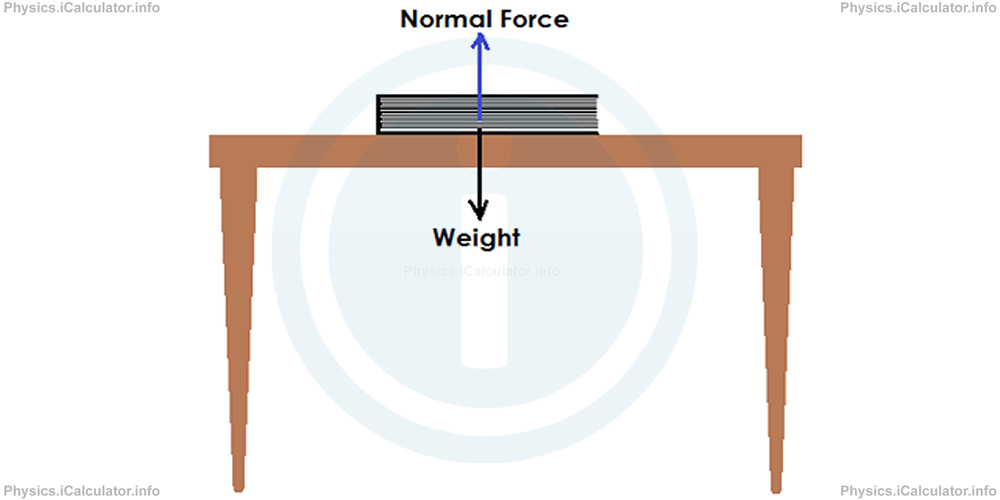
Therefore, it is obvious that when the resultant force acting on an object at rest is zero, the object will continue to remain at rest. (1)
On the other hand, when we discussed the concept of terminal velocity in the Physics tutorial "Types of Forces II. Resistive Forces (Frictional Force. Drag). Terminal Velocity", we stated that starting from the moment when the sum of resistive forces (frictional force plus air drag) become equal to the moving force (i.e. when the resultant force acting on the moving object becomes zero), the object will move at constant velocity, whose magnitude is equal to the last velocity before the equilibrium was established. We called this constant velocity as "terminal velocity".
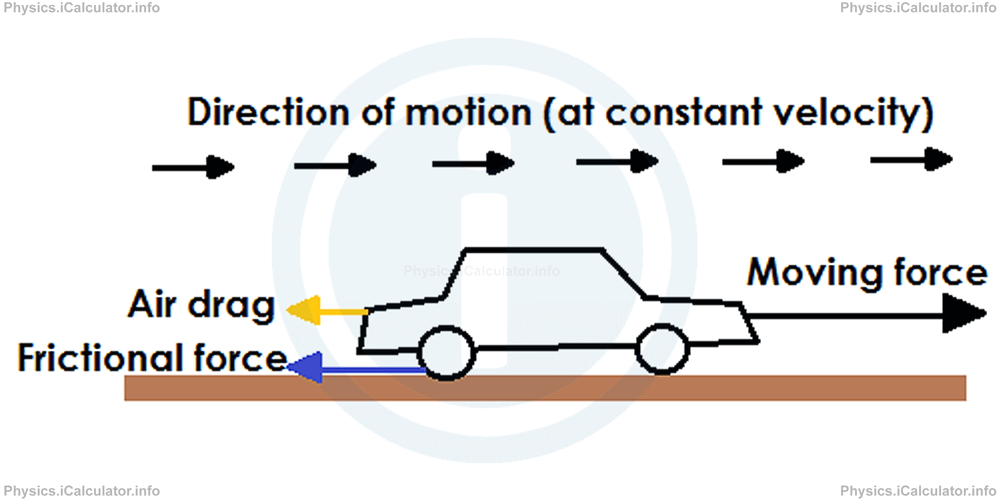
Therefore, we can say when the resultant force acting on a moving object becomes zero, it will continue moving at constant velocity. (2)
It is obvious that if no force is acting on the object, the resultant force on it, can be taken as zero. Therefore, the lack of acting forces on an object represents a special case of equilibrium.
Hence, we say when no force is acting on the object, it will maintain its previous state of uniform motion, i.e. if it was at rest, will continue to be at rest and if it was moving, it will continue moving at constant velocity. (3)
Combining the statements (1), (2) and (3), we obtain the definition of Newton's First Law of Motion. It states that:
"If no force is acting on an object or when the resultant of all forces acting on it is zero, the object will still be at rest if initially it was at rest or it will continue moving at constant velocity (at terminal velocity) if initially it was moving."
When the resultant force at an object is zero, we say, "the forces acting on it are balanced, otherwise, they are unbalanced."
Example 1
In which of the following scenarios the Newton's First Law of Motion is being applied? For simplicity, take g = 10 N/kg in all cases.
- A 2 kg stone is falling downwards. The magnitude of air drag is equal to 16.3 N.
- A 2000 kg car is moving along a horizontal plane of friction coefficient equal to 0.7. Air resistance is 1400 N and the driving force is equal to 15400 N.
- A submarine moves underwater by means of a 20500 N driving force. Air resistance if it was moving above the water would be 2000 N while the actual water drag is 20500 N.
Solution 1
a. The only forces acting on the falling stone are the gravitational force, F⃗g (acting downwards) and air resistance (drag) D⃗, which acts upwards, as the air tries to show resistance to the motion.
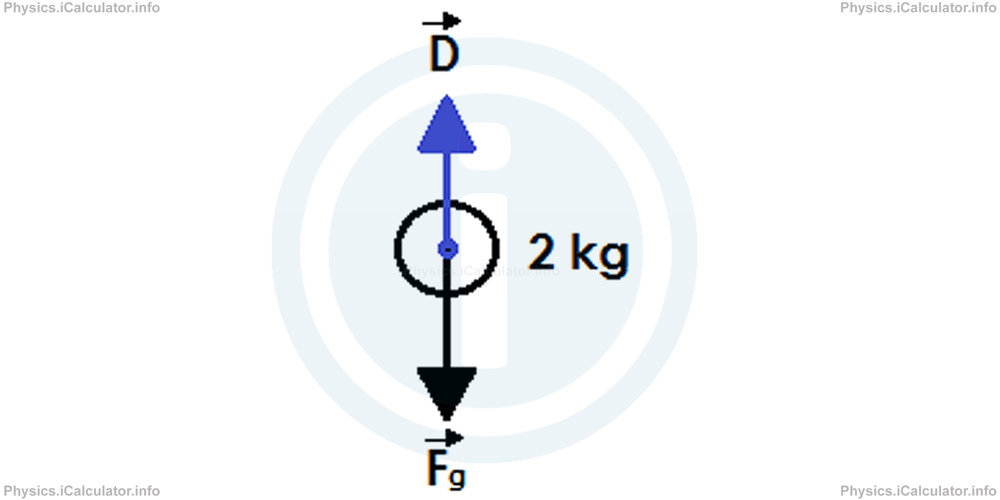
If we take the gravitational force as positive, then the air drag will be negative. We have
Since
we obtain
Since the resultant force is not zero, there is no equilibrium. As a result, forces are unbalanced. This means Newton's First Law of Motion is not being applied in this case.
b. The situation is described in the figure below.
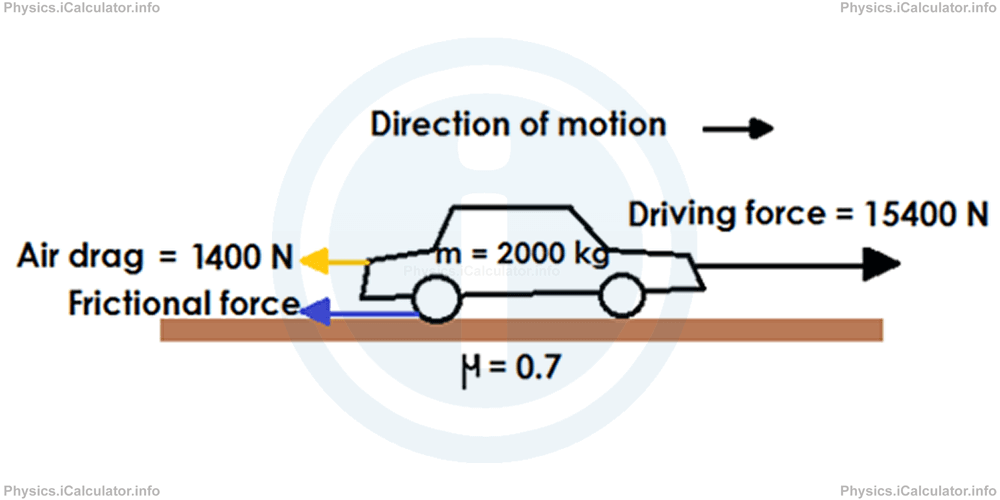
Let's calculate the frictional force first. We take it as negative (like the air drag) because it acts in the opposite direction of motion. Hence, we have
= -μ × m × g⃗
= -0.7 × 2000 kg × 10 N/kg
= -14000 N
The vector equation of the forces acting on the car is
where F⃗ is the driving (moving) force. Substituting the known values, we obtain for the magnitude of the resultant force:
= 0
This result means the forces are balanced. As a result, the Newton's First Law of Motion is applied in this case.
c. The figure below shows the horizontal forces acting at the submarine. (In the vertical direction, the weight is balanced by the buoyant [or lifting] force of water).
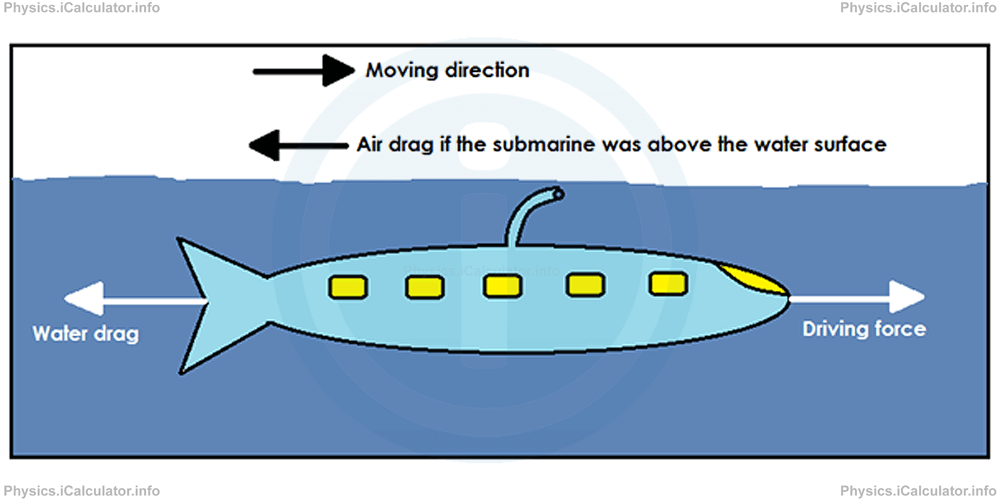
Since the driving force is equal to the water drag (20500 N each) and giving that they are in opposite directions, there is equilibrium of forces at the submarine. Air resistance is not considered here as it acts outside the water. Therefore, the Newton's First Law is applied in this case.
You have reached the end of Physics lesson 4.5.1 What does Newton's First Law of Motion State?. There are 2 lessons in this physics tutorial covering Newton's First Law of Motion. The Meaning of Inertia, you can access all the lessons from this tutorial below.
More Newton's First Law of Motion. The Meaning of Inertia Lessons and Learning Resources
Whats next?
Enjoy the "What does Newton's First Law of Motion State?" physics lesson? People who liked the "Newton's First Law of Motion. The Meaning of Inertia lesson found the following resources useful:
- Newtons First Law Feedback. Helps other - Leave a rating for this newtons first law (see below)
- Dynamics Physics tutorial: Newton's First Law of Motion. The Meaning of Inertia. Read the Newton's First Law of Motion. The Meaning of Inertia physics tutorial and build your physics knowledge of Dynamics
- Dynamics Revision Notes: Newton's First Law of Motion. The Meaning of Inertia. Print the notes so you can revise the key points covered in the physics tutorial for Newton's First Law of Motion. The Meaning of Inertia
- Dynamics Practice Questions: Newton's First Law of Motion. The Meaning of Inertia. Test and improve your knowledge of Newton's First Law of Motion. The Meaning of Inertia with example questins and answers
- Check your calculations for Dynamics questions with our excellent Dynamics calculators which contain full equations and calculations clearly displayed line by line. See the Dynamics Calculators by iCalculator™ below.
- Continuing learning dynamics - read our next physics tutorial: Newton's Second Law of Motion
Help others Learning Physics just like you
Please provide a rating, it takes seconds and helps us to keep this resource free for all to use
We hope you found this Physics lesson "Newton's First Law of Motion. The Meaning of Inertia" useful. If you did it would be great if you could spare the time to rate this physics lesson (simply click on the number of stars that match your assessment of this physics learning aide) and/or share on social media, this helps us identify popular tutorials and calculators and expand our free learning resources to support our users around the world have free access to expand their knowledge of physics and other disciplines.